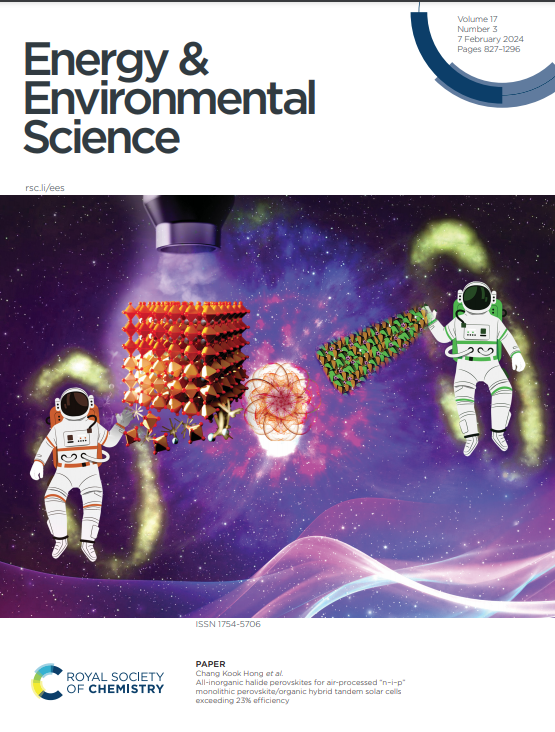Synchronous Dimension-Crystallization Engineering Enables Highly Efficient 2D/3D Tin Perovskite Solar Cells
IF 32.4
1区 材料科学
Q1 CHEMISTRY, MULTIDISCIPLINARY
引用次数: 0
Abstract
Tin perovskite films with two-dimensional/three-dimensional (2D/3D) heterostructures promise high performance lead-free perovskite solar cells (PSCs), while they are challenged by the undesirable carrier transport due to intrinsic multi-quantum wells, and susceptible crystallization kinetics upon the introduced organic spacer cations. We herein propose and validate a strategy that could simultaneously address these challenges based on synchronous dimension-crystallization engineering in 2D/3D tin perovskite films. Different from the conventional dimension engineering that relies on precise n-phase control, the employed 4-guanidinium benzoate hydrochloride (GBAC) in present work has an unforeseen desorption effect between phenylethylamine (PEA) and the perovskite, which leads to a direct transition from the 2D to the 3D phase. It is also found that introducing GBAC results in the formation of elongated organic-inorganic hybrid chains, which improve the crystallization process of the films by accelerating both nucleation and growth rates. By virtue of these merits, the resulted tin PSCs achieve a champion power conversion efficiency of 15.02%, together with an exceptional long-term stability with 87% remaining after 4000 h and 80% after 400 h under working at the maximum power point.求助全文
约1分钟内获得全文
求助全文
来源期刊

Energy & Environmental Science
化学-工程:化工
CiteScore
50.50
自引率
2.20%
发文量
349
审稿时长
2.2 months
期刊介绍:
Energy & Environmental Science, a peer-reviewed scientific journal, publishes original research and review articles covering interdisciplinary topics in the (bio)chemical and (bio)physical sciences, as well as chemical engineering disciplines. Published monthly by the Royal Society of Chemistry (RSC), a not-for-profit publisher, Energy & Environmental Science is recognized as a leading journal. It boasts an impressive impact factor of 8.500 as of 2009, ranking 8th among 140 journals in the category "Chemistry, Multidisciplinary," second among 71 journals in "Energy & Fuels," second among 128 journals in "Engineering, Chemical," and first among 181 scientific journals in "Environmental Sciences."
Energy & Environmental Science publishes various types of articles, including Research Papers (original scientific work), Review Articles, Perspectives, and Minireviews (feature review-type articles of broad interest), Communications (original scientific work of an urgent nature), Opinions (personal, often speculative viewpoints or hypotheses on current topics), and Analysis Articles (in-depth examination of energy-related issues).
 求助内容:
求助内容: 应助结果提醒方式:
应助结果提醒方式:


